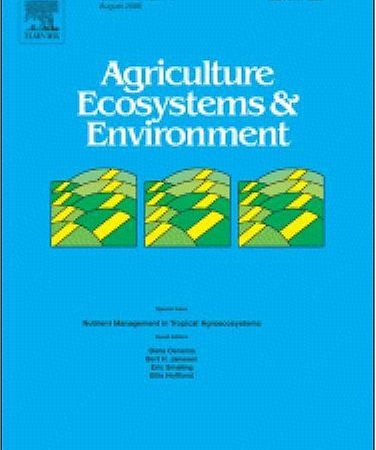
Rice (Oryza sativa L.) production is facing major challenges, including scarcity of irrigation water and ongoing climate change. Modifications of the current cropping techniques could increase yield, save water, and mitigate greenhouse gas emission. We investigated the effect of planting methods (young seedlings, wide spacing with alternate wetting and drying irrigation [YW-AWD], old seedlings, narrow spacing with continuous flooding [ON- CF], and in-between the two planting methods [IB-AWD]) and rice varieties on methane (CH4) and (N2O) emissions during two crop seasons. The results show that CH4 emission, averaged over rice varieties, reduced for YW-AWD by 41% and 24%, compared with ON-CF, while the reduction in emission for the IB-AWD method was 48% and 26% in summer (dry) and monsoon (wet) season, respectively. However, an increase in N2O emission was observed for YW-AWD and IB-AWD methods in both seasons. There was no significant difference in CH4 and N2O emissions between the tested varieties. The total water saving under YW-AWD and IB-AWD was 47.5% and 49.3% in summer, and 79.4% and 79.8% in monsoon season, respectively, compared with ON-CF. The grain yields of YW-AWD and IB-AWD were comparable with the yield of ON-CF in both seasons. The CO2-eq emission and yield-scaled CO2-eq emission from YW-AWD and IB-AWD were significantly lower compared with ONeCF due to low CH4 emission, while maintaining similar rice yields. This study showed that the YW-AWD and IB- AWD methods are effective in reducing CO2-eq emission and saving irrigation water, while maintaining the rice yield.








